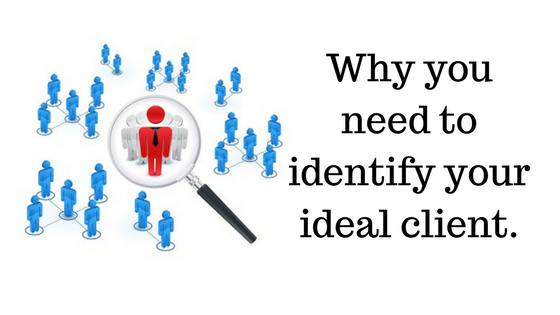One of the most critical aspects of building a successful business is understanding your customers and knowing how to connect with them effectively. Whether you are launching a new product, offering a service, or building a brand, your ideal customer is the foundation of your marketing strategy. Without knowing who they are, what they want, and how to reach them, your business will struggle to generate sales and create meaningful customer relationships.
In this article, we’ll explore how to identify your ideal customer and build strategies to connect with them in ways that are authentic, valuable, and ultimately profitable.
1. Understanding the Importance of Your Ideal Customer
Before diving into the “how” of identifying and connecting with your ideal customer, it’s essential to understand why it’s crucial to focus on them.
The ideal customer, also referred to as your “target audience,” is the group of people who are most likely to benefit from your product or service. They are the individuals whose pain points align with the solutions you offer, and their needs, desires, and behaviors make them the perfect match for your brand.
By identifying your ideal customer, you can:
-
Tailor your marketing efforts: Instead of targeting a broad audience, you can focus your resources on the people who are most likely to convert.
-
Craft personalized messages: Understanding your ideal customer helps you craft messages that resonate with them, increasing engagement and conversion.
-
Build stronger relationships: When you know your customer’s preferences, you can create more meaningful interactions and establish long-term loyalty.
Now, let’s look at the steps you need to take to identify and connect with your ideal customer.
2. Defining Your Ideal Customer
The first step in identifying your ideal customer is creating a clear and precise definition of who they are. This requires research, data collection, and analysis. You can start by asking yourself the following questions:
Who Are They?
Start by identifying basic demographics such as:
-
Age: What age group is most likely to use your product or service?
-
Gender: Does your product appeal more to one gender, or is it neutral?
-
Location: Are your customers based in a particular region, country, or city?
-
Income Level: What is their purchasing power? Can they afford your products?
-
Occupation: Are they professionals, students, or stay-at-home parents?
What Do They Need or Want?
Understand the problems your ideal customer faces and how your product or service solves them. For example, are they looking for convenience, luxury, cost-efficiency, or high performance? Knowing their pain points allows you to tailor your product offerings to better meet their needs.
What Are Their Values and Beliefs?
Customers are drawn to brands that align with their values. Do they care about sustainability? Do they support local businesses or prefer eco-friendly products? Understanding these aspects can help position your brand in a way that appeals to their ethical preferences.
3. Conducting Market Research
Once you’ve established the basics of your ideal customer, it’s time to validate these assumptions through market research. Market research is vital for understanding your customer’s behavior, preferences, and expectations. Here are some strategies for effective research:
Surveys and Polls
Create surveys to directly ask your audience about their needs, preferences, and pain points. Tools like Google Forms, Typeform, or SurveyMonkey allow you to gather valuable data. Offer an incentive like a discount or free resource in exchange for participation to boost engagement.
Customer Interviews
In-depth customer interviews can reveal nuances that surveys may miss. Reach out to current customers or potential leads and have open conversations about their challenges, what attracted them to your product, and their experience with your brand. These interviews can give you detailed insights into their motivations and decision-making processes.
Competitor Analysis
Take a look at your competitors and their customer base. Who are they targeting? What messages do they use to connect with their audience? Competitor research can reveal gaps in the market and opportunities for differentiation.
Social Media Insights
Social media platforms like Facebook, Instagram, and LinkedIn offer analytics tools to gather demographic data about your followers. You can also observe conversations and trends within your industry to see what your audience cares about.
4. Creating Customer Personas
A customer persona is a detailed, semi-fictional representation of your ideal customer based on real data and insights. Creating personas helps you visualize your target customer and refine your marketing strategies accordingly.
How to Create Customer Personas:
-
Give them a name: Assign a name to your persona to make them feel like a real person. For example, “Tech-Savvy Tom” or “Eco-Conscious Emma.”
-
Include demographics: Based on your research, include relevant demographic details such as age, income, education level, and location.
-
Identify goals and challenges: What does your persona want to achieve, and what obstacles are they facing in doing so? For instance, a persona could be a busy parent who needs efficient meal delivery services.
-
Add behavioral traits: How does your persona behave when making purchasing decisions? Are they spontaneous buyers or do they take time to research products? Do they rely on recommendations from friends or influencers?
By creating several customer personas, you can tailor your marketing efforts to resonate with each type of ideal customer.
5. Where to Find Your Ideal Customer
Now that you know who your ideal customer is, the next step is figuring out where to find them. The digital age has provided businesses with an abundance of platforms to connect with their audience, but it’s essential to target the right ones.
Social Media
Social media platforms are where people spend a significant portion of their time. Depending on your customer persona, you may focus on different platforms:
-
Instagram and Pinterest are great for visually-driven products like fashion, home decor, and beauty.
-
Facebook is effective for a broad range of audiences and offers detailed targeting options for ads.
-
LinkedIn is best for B2B marketing and professional services.
-
Twitter and Reddit are excellent for niche communities and real-time engagement.
Search Engines (SEO)
People often search for solutions to their problems on Google. By optimizing your website for SEO, you can attract your ideal customers when they search for keywords related to your product or service. Creating valuable content, targeting the right keywords, and improving site speed are essential SEO strategies.
Email Marketing
Email marketing allows you to connect directly with your ideal customer. Build an email list through lead magnets such as free resources or discounts. Segment your list based on customer personas to send personalized content that addresses their specific needs.
6. Crafting Your Marketing Message
Once you know who your ideal customer is and where to find them, it’s time to create marketing messages that resonate with them. Your messaging should speak directly to their pain points, desires, and emotions. Here are some tips to make your marketing message more effective:
Focus on Benefits, Not Features
Instead of focusing solely on the features of your product or service, emphasize how it will benefit your customer. For instance, rather than saying “Our software has advanced analytics,” say “Our software helps you save time and make data-driven decisions.”
Use Emotional Appeal
People make purchasing decisions based on emotions, not just logic. Show empathy and connect with your audience’s emotions by highlighting how your product or service can improve their life. For example, if you sell fitness equipment, focus on how it can help customers feel healthier, stronger, and more confident.
Create a Call to Action (CTA)
Your message should always include a clear call to action. Whether it’s “Buy Now,” “Learn More,” or “Sign Up for Our Newsletter,” your CTA should prompt your ideal customer to take the next step toward a conversion.
7. Building Relationships and Trust
Building strong, lasting relationships with your ideal customer is key to long-term success. Trust is a vital component of any customer relationship, and once trust is established, customers are more likely to return and refer others.
Be Authentic
Customers can tell when a brand is being disingenuous. Be authentic and transparent in your communication. Share behind-the-scenes stories, customer testimonials, and user-generated content to build credibility.
Provide Value
Offer value to your customers beyond just selling your product. Share helpful content, offer discounts, or provide exceptional customer service. When customers feel that they are getting value from your brand, they are more likely to stay loyal.
Engage with Your Audience
Engage with your audience regularly through social media, email, or in-person events. Ask for feedback, answer questions, and show that you care about their opinions. Engaged customers are more likely to feel a personal connection with your brand.
Conclusion
Identifying and connecting with your ideal customer is the foundation of any successful marketing strategy. By understanding who your ideal customer is, where to find them, and how to craft a message that resonates with them, you can create meaningful relationships that drive sales and foster loyalty.
Remember, the key to connecting with your ideal customer is to continuously learn about their needs, behaviors, and preferences, and adapt your marketing strategies to meet those needs. By doing so, you’ll not only attract the right customers but also build a loyal base of advocates for your brand.

